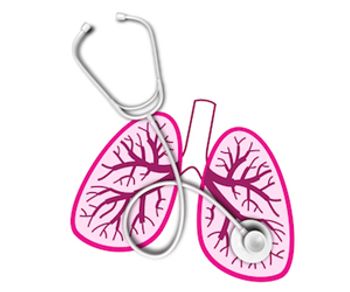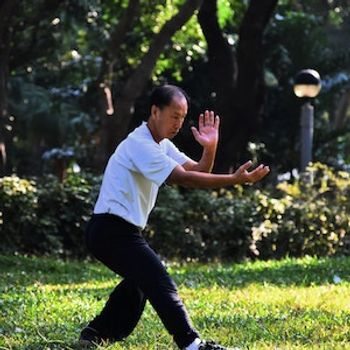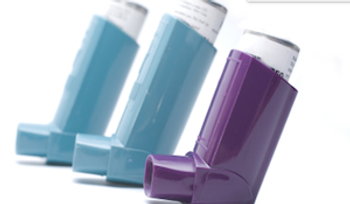
A study of a once-daily add-on medication for chronic obstructive pulmonary disease (COPD) found that it was associated with improvements in health status and quality of life.

A study of a once-daily add-on medication for chronic obstructive pulmonary disease (COPD) found that it was associated with improvements in health status and quality of life.

Patients with asthma–COPD overlap syndrome, known as ACO, had a higher prevalence of both insomnia and respiratory symptoms than those with only asthma or chronic obstructive pulmonary disease (COPD), a study reported.

In a retrospective analysis of patients with chronic obstructive pulmonary disease (COPD), those whose exacerbations were treated with systemic corticosteroids alone, or together with antibiotics, did more poorly than those treated with antibiotics alone, a recent study reported in the International Journal of Chronic Obstructive Pulmonary Disease.

In a new study, researchers sought to identify the heterogeneity of asthma and chronic obstructive pulmonary disease (COPD) overlap syndrome, known as ACOS, in patients with mild to moderate airflow restriction. Using national survey and insurance claims data in Korea, they sought to identify the diverse epidemiological characteristics and subtypes of ACOS associated with exac­erbations, healthcare use, and cost.

Learning good inhaler technique is critical for effective care and treatment for chronic obstructive pulmonary disease (COPD) and other respiratory disorders. But a survey of healthcare providers and patients show that both groups place more importance on medication over devices when it comes to COPD treatments, and both groups show limited concerns about proper device use.

Coverage of our peer-reviewed research and news reporting in the healthcare and mainstream press.

A new study comparing triple therapy for chronic obstructive pulmonary disease (COPD) against dual therapy resulted in a lower rate of moderate or severe COPD exacerbations and a lower rate of hospitalizations. However, triple therapy had a much higher incidence of pneumonia, which the researchers said was to be expected.

Childhood factors such as asthma, maternal smoking, bronchitis, allergic rhinitis, and eczema predisposed children to lung function decline and chronic obstructive pulmonary disease (COPD) as adults, according to 2 recent studies. Risks might be minimized by reducing maternal smoking, encouraging immunizations, having good asthma control, and avoiding smoking, researchers said.

Can tai chi act as a substitute for pulmonary rehabilitation for patients with chronic obstructive pulmonary disease (COPD)? A study of 120 patients in the journal Chest suggests that it is a possibility.

A study of 2 chronic obstructive pulmonary disease (COPD) inhalers from the same company was published recently in The Lancet Respiratory Medicine. The DYNAGITO trial showed tiotropium bromide and olodaterol, a dual bronchodilator sold under the name Stiolto Respimat, prevented exacerbations better than tiotropium bromide alone (sold as Spiriva Respimat), although not quite as much as expected.

Healthcare professionals showed a lack of knowledge about how to assess and teach proper inhaler technique to their patients with chronic obstructive pulmonary disease (COPD), asthma, or other respiratory diseases, according to a review of 55 studies spanning 39 years examining their understanding of this issue.

If a health system could identify which patients with chronic obstructive pulmonary disease (COPD) were at risk for exacerbations of disease, interventions aimed at improving health outcomes could be developed. A study to develop and evaluate predictive models that could be used to identify such high-risk patients was unable to do so, however.

Patients with chronic obstructive pulmonary disease (COPD) who were trained on appropriate inhaler use and who were checked on their use were significantly more likely to be adherent, study found.

State variations in chronic obstructive pulmonary disease (COPD) outcomes suggest that the condition is more common in large rural areas compared with metropolitan areas, according to the Morbidity and Mortality Weekly Report from CDC.

Long-term use of inhaled corticosteroids, which are widely used to treat chronic obstructive pulmonary disease, are associated with an increased risk of fractures, according to a new study in CHEST.

A health insurance claims-based risk assessment tool to predict patients’ first severe chronic obstructive pulmonary disease exacerbation has been developed and validated.

A new study found that patients with chronic obstructive pulmonary disease with higher symptom burden are worse at self-management, which is an important part of managing the disease.

Multimorbidity is common in patients with chronic obstructive pulmonary disease (COPD), and is associated with high levels of polypharmacy, which can lead to an increased risk of adverse drug reactions.

According to the Medicare Payment Advisory Commission (MedPAC), hospital readmission rates have fallen following implementation of the Hospital Readmissions Reduction Program (HRRP), and HRRP did not have a negative impact on mortality rates.

Shifting care for patients with chronic obstructive pulmonary disease (COPD) from the hospital to the home reduced hospital readmissions by 64% and emergency department visits by 52%, a Canadian program found.

Respimat from Boehringer Ingelheim is now the first and only inhaler to be awarded the Ease of Use Commendation by the Arthritis Foundation. This award identifies products that make life easier for people with arthritis and other physical limitations.

Cigarette smoking is the most common cause of chronic obstructive pulmonary disease (COPD), but not all smokers develop the condition, and many non-smokers do. Why that is has remained a mystery until now, as a research team, funded by the National Institutes of Health, has discovered genetic variations in the anatomy of the lungs could serve as early-warning indicators.

Psychological factors negatively affect quality-of-life scores in chronic obstructive pulmonary disease (COPD) patients, according to a recent study published in the International Journal of Chronic Obstructive Pulmonary Disease.

Patients with chronic obstructive pulmonary disease should be given the pneumococcal conjugate vaccine and influenza vaccines to decrease the risk of exacerbations. However, despite the evidence of vaccine efficacy, improvements are needed in coverage and awareness.

Less than 10% of patients with chronic obstructive pulmonary disease (COPD) who may benefit from pulmonary rehabilitation received a referral from their physician, according to a new study. However, there was no association found between referral status and COPD exacerbations.

259 Prospect Plains Rd, Bldg H
Cranbury, NJ 08512
© 2025 MJH Life Sciences®
All rights reserved.
